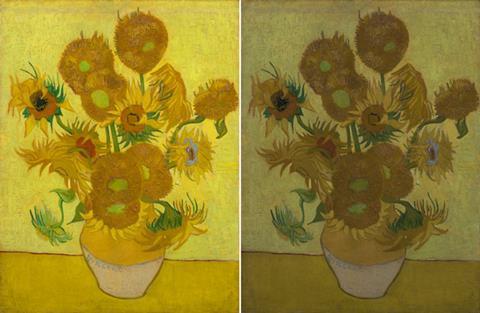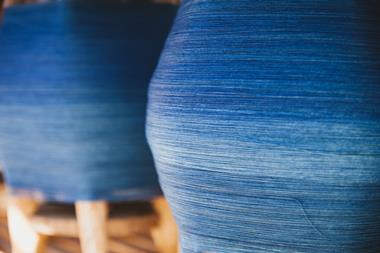Computer calculations predict why Van Gogh’s dyes are splitting on the canvas

Chemists in Italy have proposed a reason why sulfate-rich lead chromate dyes, used widely in paintings, degrade under light.
Lead chromate dyes were a staple tool that Vincent van Gogh used widely in his art, including his iconic Sunflowers paintings. He enjoyed mixing pigments to obtain rich, striking colours but his favoured sulfate-rich dye, a mixture of yellow lead chromate and white lead sulfate, has been known to degrade under sunlight, fading the once vivid yellow of his Sunflowers series into duller paintings.
Last year, Koen Janssens from the University of Antwerp, Belgium, showed that this was due to sunlight reducing chromium(IV) to chromium(III), but reasons behind the dye’s instability remain unknown. This knowledge gap spurred Ana Muñoz-García and her colleagues at the University of Naples Federico II to investigate the process.
Using computers to model the structure of the sulfur-rich dye, they examined whether this degradation is only a surface phenomenon or due to the structure of the dye, and suggested a pathway for the process. Density functional theory (DFT) calculations indicated that the dye has unfavourable formation energy; the composition itself is unstable, separating back into its original chromate and sulfate phases, with the sulfate preferring to clump together. These segregated sulfates in the composite are to blame, as they absorb UV light, which reduces chromium to its duller green oxide. ‘Pure sulfate is the bad guy of the story,’ Muñoz-García tells Chemistry World. ‘All the sulfates want to be together to minimise stress in the material. So because of the segregation you generate that sulfate and because the sulfate absorbs in the UV, you get degradation.’
Will this discovery assist art preservation strategies? Muñoz-García hopes so. ‘From our calculations our conclusion, which is very sad, is that we cannot stop chromate being reduced, because this solution is unstable, but what we can do once we understand the surface process is to work with experimentalists trying to design a top layer that can stop the reduction of the separated chromate.’
Janssens, however, has reservations about the study. He explains that sulfur-rich dyes also darken under visible light, but highlights that an explanation for why some lead chromate–sulfate materials are found on the surface of paintings would be good to verify: ‘We have some experimental data on this and can now confront their predictions with reality; a more systematic verification is now very useful to do. In general, it will be useful to report a critical comparison between the experimental data and the theoretical predictions presented here.’
References
This article is free to access
A B Muñoz-Garcia, A Massaro and M Pavone, Chem. Sci., 2016, DOI: 10.1039/c5sc04362j












No comments yet